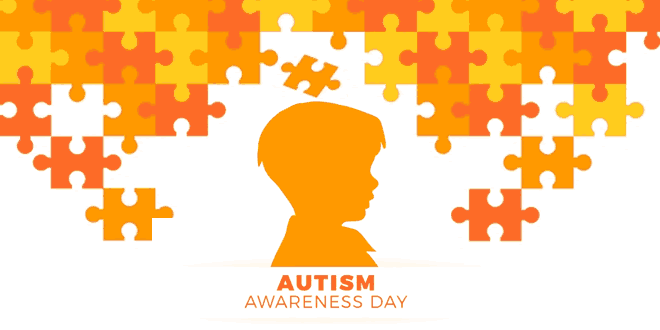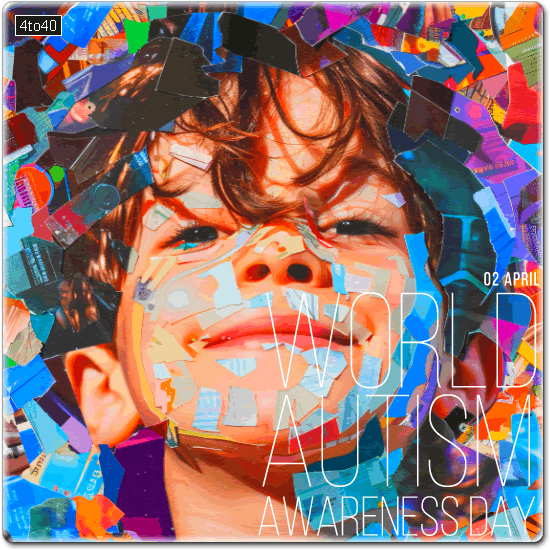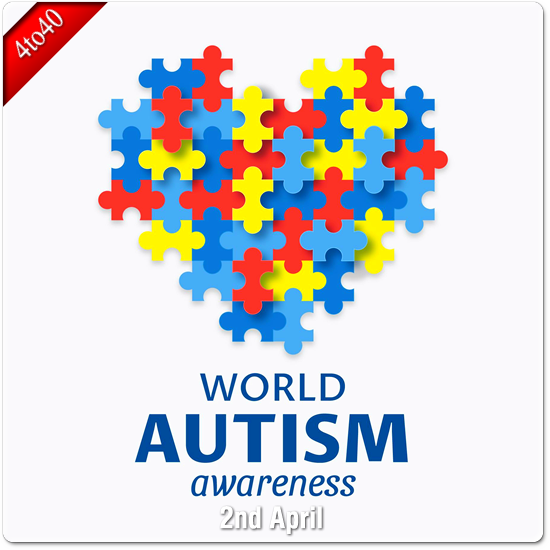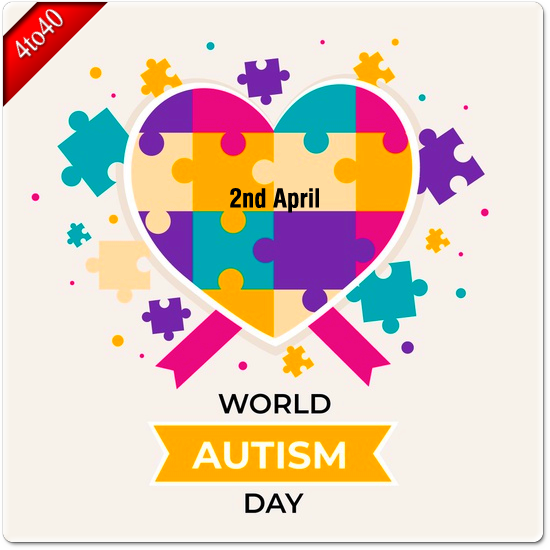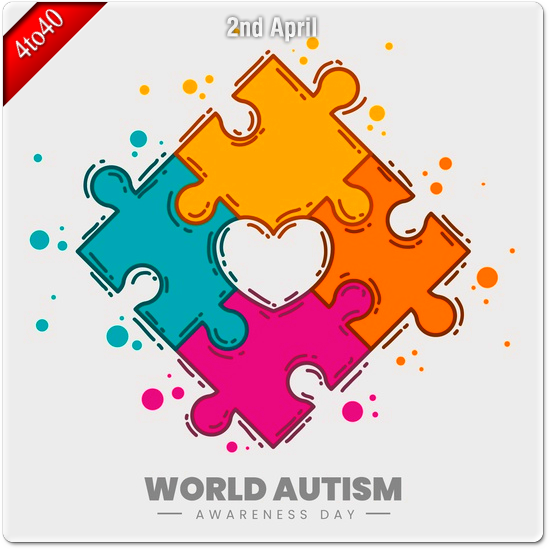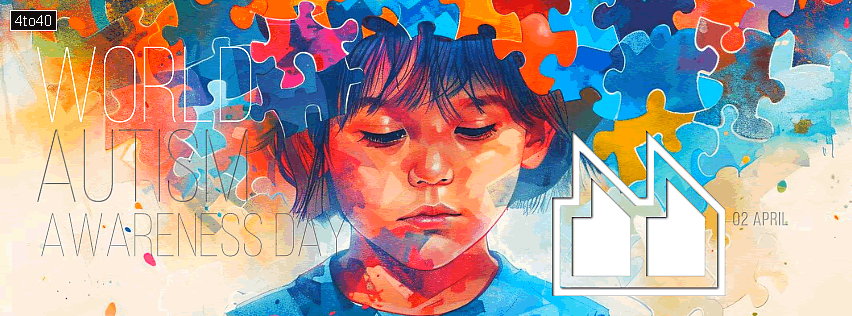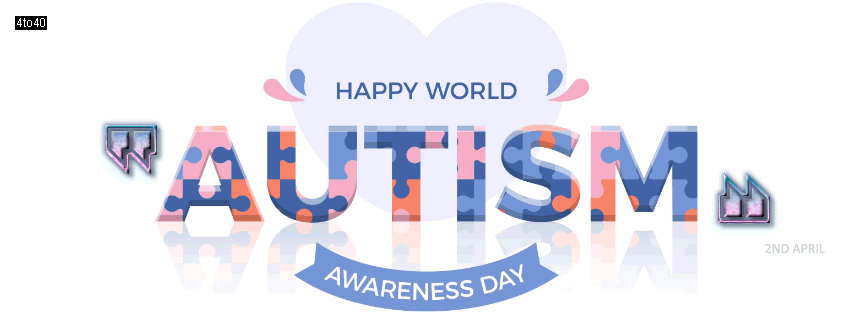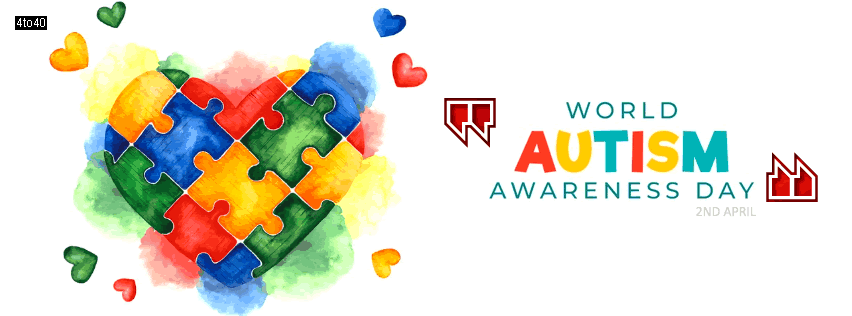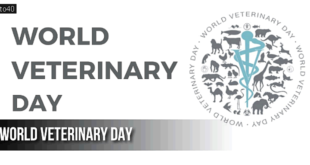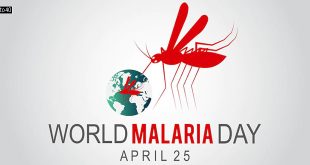World Autism Awareness Day is observed annually on 2nd April to persuade member states to take measure for raising awareness of people about Autism Spectrum Disorder (ASD), a rare neurological disorder appearing mainly in infants.
United Nations General Assembly passed the Resolution number 62/139 on 1st November 2007, for declaring 2nd April as the “World Autism Awareness Day“, which was adopted by the council on 18th December 2007.
The resolution was proposed by the United Nations representative from the West Asian country of Qatar, Her Highness Sheikha Mozah Bint Nasser Al-Missned, who is also the wife of Sheikh Hamad Bin Khalifa Al-Thani, former Emir (Honorary title of High King) of the State of Qatar from 1995-2013. The resolution was unanimously supported by all the member states of the United Nations General Assembly.
World Autism Awareness Day: Background
Throughout its history, the United Nations family has celebrated diversity and promoted the rights and well-being of persons with disabilities, including learning differences and developmental disabilities. In 2008, the Convention on the Rights of Persons with Disabilities entered into force, reaffirming the fundamental principle of universal human rights for all. Its purpose is to promote, protect and ensure the full and equal enjoyment of all human rights and fundamental freedoms by all persons with disabilities, and to promote respect for their inherent dignity. It is a vital tool to foster an inclusive and caring society for all and to ensure that all children and adults with autism can lead full and meaningful lives.
The United Nations General Assembly unanimously declared 2 April as World Autism Awareness Day (A/RES/62/139) to highlight the need to help improve the quality of life of those with autism so they can lead full and meaningful lives as an integral part of society.
Autism is a lifelong neurological condition that manifests during early childhood, irrespective of gender, race or socio-economic status. The term Autism Spectrum refers to a range of characteristics. Appropriate support, accommodation and acceptance of this neurological variation allow those on the Spectrum to enjoy equal opportunity, and full and effective participation in society.
Autism is mainly characterized by its unique social interactions, non-standard ways of learning, keen interests in specific subjects, inclination to routines, challenges in typical communications and particular ways of processing sensory information.
The rate of autism in all regions of the world is high and the lack of understanding has a tremendous impact on the individuals, their families and communities.
The stigmatization and discrimination associated with neurological differences remain substantial obstacles to diagnosis and therapies, an issue that must be addressed by both public policy-makers in developing nations, as well as donor countries.
What is Autism Spectrum Disorder (ASD)?
Autism Spectrum Disorder (ASD) or simply called “Autism“, is a rarely mental disorder, which stays with the effected for whole life. The first symptoms of Autism are visible during the first three years of a child. Autistic children show unusual psychological behavior and find it difficult to interact or socialize, have difficulty in speaking or framing of sentences, demonstrate repetitive behavior, along with other behavioral symptoms.
Initial symptoms may appear within the age of six months and are prominent by the age of three years. Some children may show unusual abilities, like exceptional memorization and concentration, other than the general population.
Why it is observed?
Autism affects over 20 million people globally as in 2019, including children from belonging to various societal backgrounds and from different corners of the world. What is disturbing is the fact that the number of affected is increasing gradually and has doubled in some countries during the past two decades. For example, in the United States 1.5% of children were diagnosed with ASD as in 2017, while in 2000, the affected children were only 0.7% of the total children population.
According to a recent world Health Organization’s global report, one in one hundred and sixty children is suffering from Autism Spectrum disorder (ASD). The early symptoms develop during childhood by the age of three years and remain in adulthood, some requiring lifelong care.
Children and adult with Autism Spectrum Disorder, go through much psychological stress as they are unable to live normally, without care and support. This imparts a high level of stress not only on the affected but also on their caretaker/s.
The situation worsens with inadequate medical facilities and lack of training to parents and care takers of the effected. Apart from being an emotional burden, ASD is also a financial burden on the family of the affected.
Hence, it becomes imperative to raise awareness about the symptoms, affects and diagnosis of ASD, so that the affected can be appropriately treated or supported to lead an independent life. Therefore, World Autism Awareness Day becomes significant by raising global awareness about ASD, with help of governments, stake holders, NGOs and other relevant organizations. The day is a tool to support the global campaign against ASD, both logistically and financially.
How Is World Autism Awareness Day Observed?
World Autism Awareness Day is observed globally to raise awareness about Autism Spectrum disorder or simply Autism. The original resolution adopted by the United Nations General Assembly stressed upon building support and raising public awareness, about autism, by bringing together, the member states, non government organizations, private firms and other relevant organizations.
Every year since 2012, a central theme is adopted on World Autism Awareness Day and the major focus of the activities is on the central theme of the year. Activities like panel discussions, talks and debates are organized with participants include politicians, policy makers, NGOs and general public. Such shows are organized at various suitable locations throughout the globe.
Informative events are also organized in schools, colleges and other relevant places for the care takers and parents of autistic children. Workshops and conferences are also held for professionals who work with autistic patients.
Workshops are also organized for the children and adults with autism, in which they are trained to be more expressive and communicative, helping them to be independent. Awareness for autism is also spread through other modes of communication, like – television, radio and newspapers. Information about the events on World autism Awareness Day is conveyed to the general public, well in advance so that they ensure their participation and benefit from them.
Special clinics are organized for the autistics and their care takers, parents, where they interact with medical and educational professionals as well as social workers to get support for the autistics’ social, psychological, educational and emotional development.
One of the most significant events on World Autism Day is the “Light it up Blue” campaign by Autism Speaks, an organization working for the cause of autism and to support autistic people. Some of the entire cities have blue lights installed in buildings, to raise awareness about autism.
Greeting Cards:
Facebook Covers:
Theme:
Though, World Autism Awareness Day was first observed in 2008, the themes are being allotted since 2012. These themes are designated by the United Nations and the purpose of the theme is to centre the focus onto a significant aspect related to autism and its sufferers. The annual themes of “World Autism Awareness Day” are given below:
- 2024: Moving from Surviving to Thriving: Autistic individuals share regional perspectives
- 2023: Transforming the narrative: Contributions at home, at work, in the arts and in policymaking
- 2022: Inclusion in the Workplace: Challenges and Opportunities in a Post-Pandemic World
- 2021: Inclusion in the Workplace: Challenges and Opportunities in a Post-Pandemic World
- 2020: The Transition to Adulthood
- 2019: Assistive Technologies, Active Participation
- 2018: Empowering Women and Girls with Autism
- 2017: Toward autonomy and Self Determination
- 2016: Autism and the 2030 Agenda: Inclusion and Neurodiversity
- 2015: Employment: the Autism Advantage
- 2014: Opening Doors to Inclusive Education
- 2013: Celebrating the Ability within the Disability of Autism
- 2012: Launch of official UN “Awareness Raising” stamp
Why do we celebrate World Autism Day?
With early intervention, therapy, and support, individuals with ASD can contribute positively to society. World Autism Awareness Day is a special occasion to celebrate the uniqueness of every individual on the spectrum and to educate more people about autism, promoting acceptance and inclusion.
What Do the Autism Colors and Symbols Mean?
The color blue, associated with calmness and acceptance, is the primary color designated for autism. Its popularity also stemmed from the worldwide Autism Speaks initiative, Light It Up Blue. On April 2nd, you’ll see a plethora of blue, as this campaign calls for people to wear blue in support of autism awareness.
हम विश्व आत्मकेंद्रित दिवस क्यों मनाते हैं?
शीघ्र हस्तक्षेप, चिकित्सा और सहायता से, एएसडी वाले व्यक्ति समाज में सकारात्मक योगदान दे सकते हैं। विश्व ऑटिज्म जागरूकता दिवस स्पेक्ट्रम पर प्रत्येक व्यक्ति की विशिष्टता का जश्न मनाने और अधिक लोगों को ऑटिज्म के बारे में शिक्षित करने, स्वीकृति और समावेशन को बढ़ावा देने का एक विशेष अवसर है।
What is the symbol for autism?
Multi-colored puzzle piece ribbon
 Kids Portal For Parents India Kids Network
Kids Portal For Parents India Kids Network
